Join More Than 50,000+ Subscribers and get latest camera news and rumors
NEW CAMERA VIDEOS ON YOUTUBE
|
By admin, on June 26th, 2024
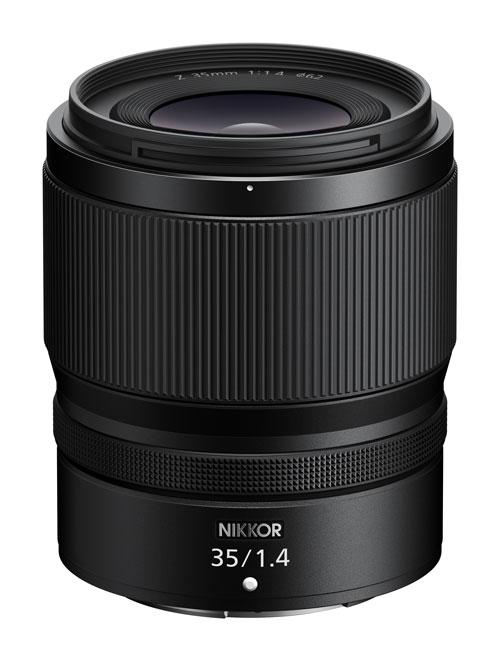
Nikon recently announced a 35 mm f/1.4 lens for the Z mount. Until now most of the company’s prime lenses have been F0.95, F1.2, F1.8, or F2.8. This is one of their first f/1.4 lenses announced for the Z mount. The good thing is it doesn’t belong to the S line of lenses, so the price somehow looks reasonable. If you have an APS-C sensor-based camera, like the Z30 or Z50, you can get lenses like the Sigma 30 mm f/1.4, made for DX-format sensors and come at a lower price point. However, if you are planning to get a full-frame camera or already have one, the best lens would be Nikon’s 35mm f/1.4.
SUPPORT US – Get this Lens B&H Store and Amazon.com
Nikon Z35mm F1.4 Lens Press Release
Fast and affordable: Nikon releases the NIKKOR Z 35mm f/1.4, a natural wide-angle lens for the Nikon Z mount
Elevate Your Artistry with the Latest NIKKOR Z Prime Lens
MELVILLE, NY (June 26, 2024) – Today Nikon announced the release of the NIKKOR Z 35mm f/1.4, a wide-angle prime lens that is compatible with Z mount full-frame/FX format mirrorless cameras. This fast, versatile lens offers a natural angle of view, popular among street and portrait photographers, with the creative freedom provided by a bright maximum aperture of f/1.4–all at an affordable price.
Not only does the NIKKOR Z 35mm f/1.4 allow users to enjoy beautiful soft bokeh and three-dimensional rendering at wide apertures, its versatile 35mm focal length and short minimum focus distance of 10.6 in. (0.27 m) make it ideal for capturing a wide variety of scenes and subjects. From landscapes and street photography to portraits and photos of flowers and pets, photographers and filmmakers will enjoy outstanding sharpness, beautifully-blurred backgrounds and exceptional versatility in low light.
Despite its large f/1.4 maximum aperture the NIKKOR Z 35mm f/1.4 is a great “carry everywhere” lens for day-to-day shooting, weighing just 14.6 oz (415 g) and measuring only 3.4 in. (86.5mm)1 in length.
The superior optical performance unique to NIKKOR Z lenses allows for clear images with outstanding clarity including close-up portraits that emphasize the subject with a pleasant background blur. Stopping down the aperture when photographing landscapes realizes incredible sharpness. As a wide-angle prime lens with superior cost performance, the NIKKOR Z 35mm f/1.4 supports the capture of a wide variety of scenes and subjects, and will appeal to a wide variety of enthusiast creators.
Primary features of the Nikon NIKKOR Z 35mm f/1.4:
- Beautiful bokeh: Max aperture of f/1.4 allows photographers and filmmakers to achieve smooth, creamy out of focus backgrounds while precisely controlling depth-of-field for ideal subject and background separation.
- Versatile focal length: The 35mm focal length is close to that of human vision, making it ideal for capturing a wide range of scenes and subjects. On DX format Z cameras, the NIKKOR Z 35mm f/1.4 becomes a 52mm equivalent prime lens, close to the classic “standard” 50mm.
- Close minimum focus: Close focus of just 10.6 in (0.27 m) is ideal for capturing details in food and flowers with a beautifully blurred background.
- Compact and well-balanced: The NIKKOR Z 35mm f/1.4 weighs just 14.6 oz (415 g), making it is easy to carry and comfortable to use for hand-held shooting.
- Fast and quiet autofocus: The use of a stepping motor (STM) for autofocus ensures fast and quiet autofocus for both stills and video.
- Clickless control ring: Easily control key exposure settings including aperture, ISO sensitivity and exposure compensation.
- Suppressed focus breathing: Advanced optical design means the NIKKOR Z 35mm f/1.4’s focal length stays consistent during focusing, which is ideal when recording video.2
- Dust and drip-resistant: Seals throughout the design help prevent dust and water droplets from entering the lens.3
Price and Availability
The new Nikon NIKKOR Z 35mm f/1.4 lens will be available in mid July 2024 for a suggested retail price of $599.95.
Follow us on our social pages FACEBOOK | TWITTER | INSTAGRAM to get live news + Nikon Rumors 24X7
By admin, on June 25th, 2024
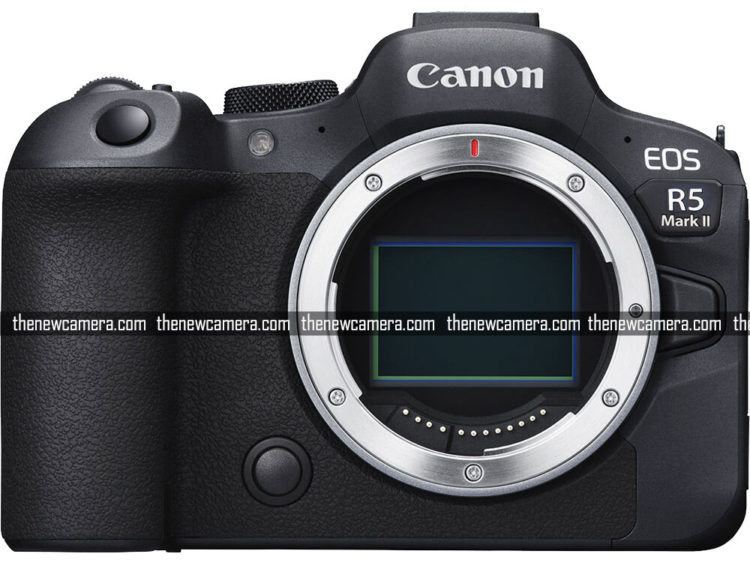
According to the latest news, we have a Canon R5 Mark II camera and a Canon R1 coming on July 17, 2024. The information is coming from Jan Wegener, who is one of the most trusted people when it comes to leaking information about upcoming cameras and lenses, specifically from Canon.
The release date is very close, and as we get closer to the announcement, we will have more leaked images and detailed specifications of the cameras. Stay tuned and stay updated.
source Jan Wegener
Get LIVE RUMORS –> FACEBOOK | TWITTER | INSTAGRAM to get live news + Canon rumors 24X7
By admin, on June 24th, 2024
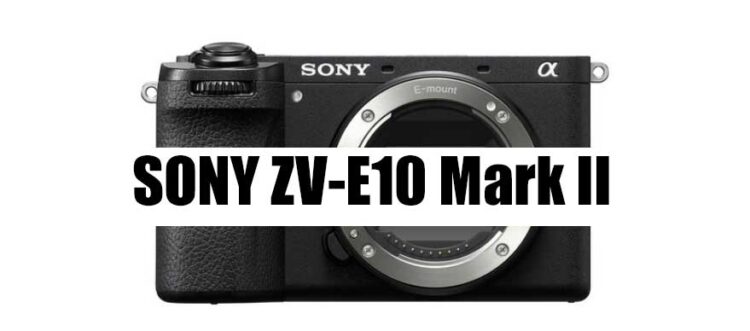
We have told you guys, the ZV-E10 II is coming on JULY and now We have confirmation. According to the latest rumors, the Sony ZE-10 II camera is expected to be announced on July 10, 2024, we have already discussed the Core specification of the camera and the possible price range you can see here.
— End of Rumor —-
Source of data of announcement – SAR YT Channel
The camera specification is expected to remain the same as we told you a few months ago.
- 26MP Exmor R APS-C BSI CMOS Sensor
- BIONZ XR Image Processor
- Dedicated AI Chip / AI Auto framing and advanced AF modes
- UHD 4K 120p [crop] 4K 60p Uncropped / FHD 240p / 10-Bit 4:2:2
- Up to 11-fps Shooting, ISO 100-32000
- Real-Time Tracking AF for Stills & Video
- 759-Point Phase Detection, 93% Coverage
- S-Log3, S-Gamut3, S-Cinetone, User LUTs
- NO EVF – Same Body Desing as ZV-E10
- Internal Mic + Inputs, USB Streaming
- 3″ 1.03m-Dot Vari-Angle LCD Touchscreen
Price Sony ZV-E10 [Rumored Price approx]
- Price $798 [Bodly Only] | $899 With 16-50mm Lens | $1199 Creator Kit (Wireless grip + Shotgun Mic) | $1399 with 10-20mm Lens
Follow us on our social pages FACEBOOK | TWITTER | INSTAGRAM, If you have time –>see more Camera News and Sony Alpha Rumor
By admin, on June 24th, 2024
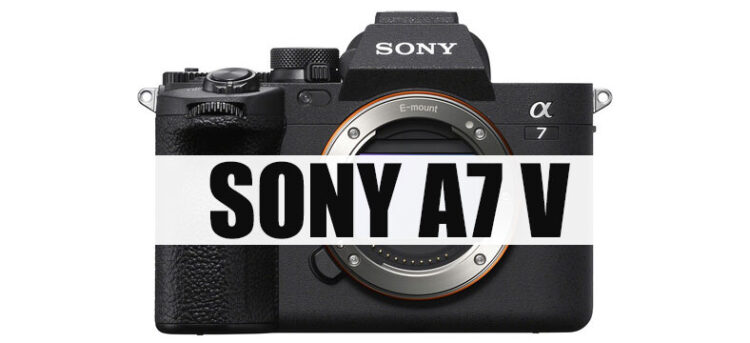
Sony A7 V camera is expected in late 2024, and we informed you back in May 2024 [Sony A7 V Coming in 2024 – Latest Rumors]. Now, other rumor websites are also suggesting an early announcement. Why are other rumor mills saying “they are expecting an early ann..” since they were first told that A7 V will arrive in 2025. Now they are fixing their rumor as they always do.
Sony A7 V Latest Rumors from Webio
Look at the Chinese rumor we have received right now:
Not long ago, Nikon released their brand new Z6 third-generation camera, the Z6III, which features the first “partially stacked” sensor. The new sensor improves FAST continuous shooting for both stills and videos at higher frame rates.
Many people are curious about this sensor. However, there have been recent rumors suggesting that Sony’s new A7 series camera might, possibly, use the same sensor as the Nikon Z6III. There are speculations that the Z6III, being a comprehensive mid-range model, directly competes with Sony’s A7 series, which might potentially accelerate the release of Sony A7V to some extent.
—— End of rumors —-
Do you think that Sony will use the Z6 Mark 3 camera’s Exmor sensor to resolve their speed readout issues and all that? I don’t think so because I don’t believe Sony will decrease the sensor resolution of their A7 V camera. They will likely update the A7 IV camera sensor with stacked TECH, AI chip, and a faster image processor.
Let me know ur thoughts on this
Check out more
Wild Rumors: Sony FX30 II, Sony FX30 R and Sony ZV-E1 II Coming in 2025
Follow us on our social pages FACEBOOK | TWITTER | INSTAGRAM, If you have time –>see more Sony Alpha Rumor
By admin, on June 22nd, 2024
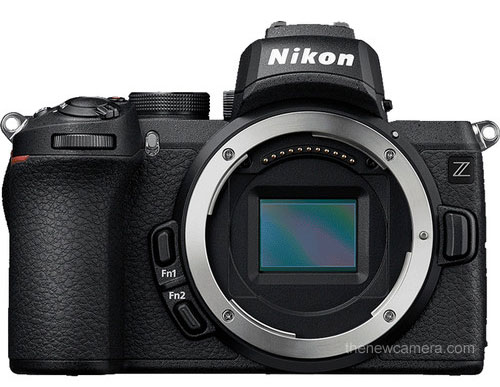
According to the latest news we have, the Nikon Z80, a DX-format Mirrorless camera from Nikon is in the announcement pipeline.
Earlier we were expecting the arrival of the Nikon Z50 Mark II in the next few months (before Aug 2024), but now the source has gone completely wild, and just after sharing the Nikon Z7 II Specification, he also shared information about the upcoming Nikon Z80.
Nikon Z80 Camera Specification
- The camera will feature the same hybrid IBIS stabilization technology that we have seen in the Nikon Zf / Nikon Z6 Mark 3 camera.
- Additionally, the camera will have the Expeed 7 image processor with dual data stream technology.
It also shares a hint that the video graphics core specification of this camera will create a benchmark among APS-C users.
Follow us on our social pages FACEBOOK | TWITTER | INSTAGRAM to get live news + Nikon Rumors 24X7
Source E88_8888
By admin, on June 22nd, 2024

Multiple Nikon Z7 Mark III camera specifications float over the web, in the latest set of specifications the upcoming camera is said to feature a revised 45 MP sensor like the Z6 III partially stacked sensor, the same tech is expected to be used inside the cam – here is the sensor specs -controlled partially stacked BSI sensor45.7 megapixels, low-pass removal, high sensitivity Improved – here is the full post
NIKON Z7 III
- controlled partially stacked BSI sensor45.7
- megapixels, low-pass removal, high sensitivityImproved
- low-power EXPEED processorAI – coprocessor Intelligent
- object recognition, intelligent selection of focus objects Predictive focus and object trackingMulti
- -frame noise reductionJPG, HEIF picture shootingMulti
- – frame displacement super-resolution picture straight outScene recognition- Dynamic white balance retentionC30
- , C60, C120*High-speed shooting
- *: C120 is only for DX formatMore
- focused on video quality than Z6 III and Z8Gyroscope
- combined with lens coordinates the body’s five-axis image stabilization to achieve enhanced video stabilizationVideo
- full pixel readout time: FX format ~11.5ms, DX format ~7.5msHEVC
- 10Bit (4:2:0/4:2:2), AVC 10Bit 4:2:2 Intra, Apple ProRes 422HQ & 422 & 422LT video recording, supports AI multi-frame correlation noise reductionFX
- format 8K UHD 30p (8.3K supersampling), 5.4K 60p (8.3K supersampling), 4K UHD 60p (8.3K supersampling), FHD 480p (2.7K supersampling)
- DX format 5.4K 60p, 4K UHD 120p (5.4K supersampling), FHD 120p (5.4K supersampling)
- New long-time recording LT mode NRAW 12BIT
- FX format NRAW HQ/SQ/LT 8.3K 60p, 5.5K 60p (supersampling), 4.1 K 60p (supersampling), 2.7K 480p
- DX format NRAW HQ/SQ/LT 5.4K 120p, 4.0K 120p (supersampling)
- Price ~3000USD
TNC TAKE –
The above information is coming from E88_8888, which do shares correct information most of the time.
But, I personally think the Nikon Z7 III will use the 61 Mp—67 Mp sensor [modified] we have seen in the Sony A7R III camera, although the specs that we have seen above have very detailed information.
Stay tuned more updates are coming
Also, see Latest Nikon News –
Latest Nikon Z6 III comparison
Nikon Z6 III vs Sony A7 IV | In-Depth Analysis | Best Camera for Photographers
Nikon Z6 Mark III vs Nikon Zf
Follow us on our social pages FACEBOOK | TWITTER | INSTAGRAM to get live news + Nikon Rumors 24X7
Source E88_8888
By admin, on June 18th, 2024
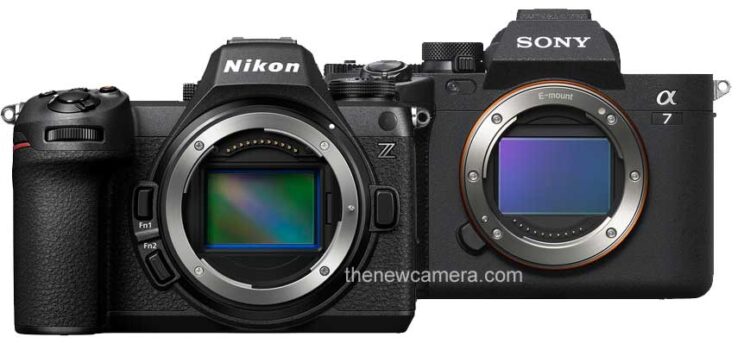
Let’s the comparison of the Nikon Z6 III camera with the Sony A7 IV starting from the design part we do have some major differences let’s find out.
The Sony A7 IV camera uses a 3.69 million-dot electronic viewfinder whereas in the latest Nikon Z6 Mark 3 camera, Nikon has introduced a flagship-level electronic viewfinder with 5.76 million resolution. Not only that, the refresh rate of this particular viewfinder is the best in its class with 120 frames per second as well as the EVF has 4000 nits of brightness units. That indicates you will experience one of the best electronic viewfinders ever introduced in a camera.
Buy Nikon Z6 III from B&H Store | amazon.com
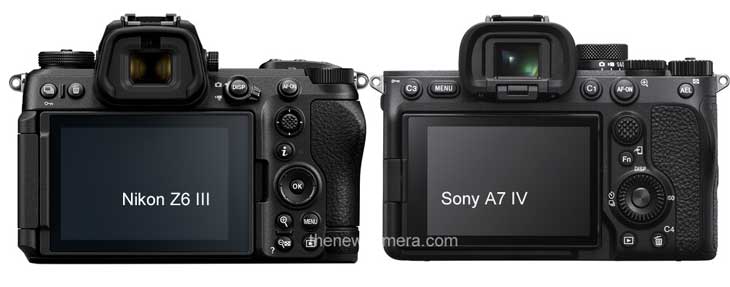
Design and Build
Electronic Viewfinder (EVF)
- Sony A7 IV: 3.69 million-dot resolution.
- Nikon Z6 Mark 3: Flagship-level EVF with a 5.76 million-dot resolution, 120 frames per second refresh rate, and 4000 nits brightness. This provides a superior viewing experience.
Now the second major advantage in the design part of the Nikon Z6 Mark 3 camera we have is the introduction of a full-size HDMI port, so that’s a really very usable tool for professional cinematographers as well as photographers. For those who work in the studio and use their camera in their workflow HDMI cable this is a highly usable upgrade.
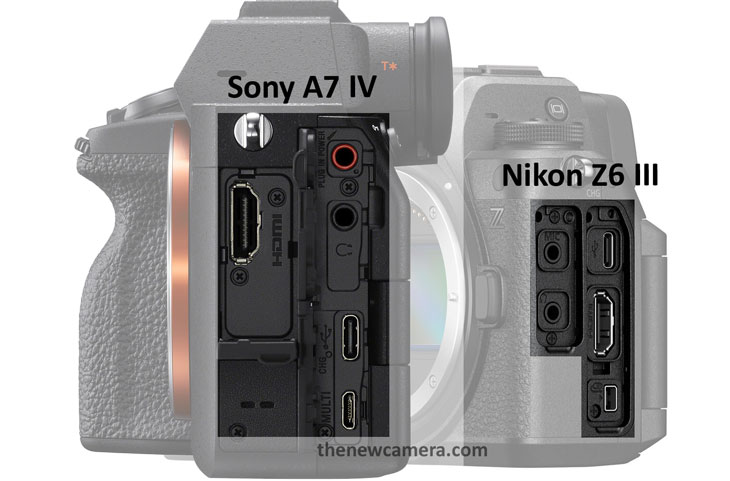
HDMI Port
- Nikon Z6 Mark 3: Features a full-size HDMI port, as well as Sony A7 IV camera, features Full Size HDMI port
Apart from these two features, the rest of the force in both the camera is almost similar. Even if we compare the display screen, the Nikon Z6 Mark 3 camera vari-angle display screen is slightly larger by 2 inches compared to the Sony A7 IV camera. Resolution-wise, the Sony A7 IV camera uses a 1.4 million-dot display unit whereas Z6 Mark 3 camera uses 2.1 million dots display unit, so even though if you compare the electronic viewfinder or the vari-angle display screen in both of the scenarios Z6 Mark 3 camera wins.
Dual vs Triple Card Slot – No Backup option in Nikon Z6 III
The Sony A7 IV camera carries 3 card slots now why do they have to put 3 different card slots in a single camera says there is no connection between a CF Express Type A card slot and an SD card slot(s), so they have to put two different sets of UHS-II SD card slot and single CF Express Type A card slot at the Sony A7 IV camera so that if you want to create a backup card then you can utilize the two different UHS-II SD card slots in a camera like you use them from DSLR time as a backup card or once the card gets overflow then the camera automatically stores in a different (SD) card so you have all the options available as you generally used the two different card slots in any other camera Pro DSLR Camera, A7 IC also has an extra CF Express to record 4K videos up to 30 frames per second without getting the camera overheated.
The biggest issue with the Nikon Z6 Mark 3 cameras is that you only have two different card slots which act as a single card slot since one is a UHS-II SD card slot and the other is a CF Express Type B card slot now none of these cards are connected so there is no way that you can create a backup card.
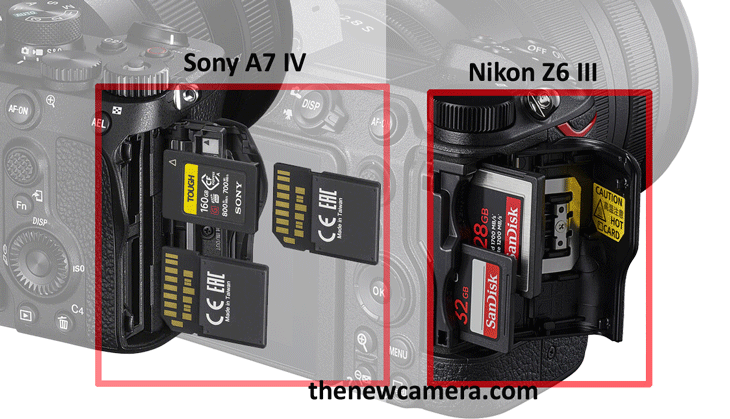
Display Screen
- Sony A7 IV: 1.4 million-dot display unit.
- Nikon Z6 Mark 3: Vari-angle display screen with 2.1 million dots, offering a clearer and larger display.
Now let’s talk about one of the biggest advantages of the Sony A7 IV camera. The Sony A7 IV camera’s battery life is twice as good as in the Z6 Mark 3. With the help of A7 IV you can capture approximately 600 shots and in Z6 Mark 3 with EN-EL 15c battery you’re limited to 380 shots, so approximately with the A7 IV camera, you are getting 220 plus shots in a single charge.
Battery Life
- Sony A7 IV: Approximately 600 shots per charge. That’s an awesome backup, just like DSLR time when u charge and forget
- Nikon Z6 Mark 3: Approximately 380 shots per charge with the EN-EL15c battery. The Sony A7 IV offers better battery life, providing around 220 more shots per charge.
Now it’s time to compare the core specifications of both cameras.
Core Specifications Difference
Sensor and Performance
- Nikon Z6 Mark 3: Newly developed 24.5MP Partially-Stacked CMOS Sensor
- Sony A7 IV: 33MP Full-Frame Exmor R CMOS BSI Sensor (Non Stacked)
Let’s start with the sensor in the latest Z6 Mark 3 camera. We have recently developed partially stacked CMOS sensor with the help of new stacked sensor the camera is able to grab continuous shooting speed up to 120 frames per second in DX mode as well as in full resolution JPEG mode you are able to capture up to 60 frames per second. At the very same time if we calculate the readout speed of the sensor then it ranges between 6.4 milliseconds to 9.4 milliseconds, so overall the readout speed of Nikon Z6 Mark 3 camera sensor is exceptionally well and you will not notice any rolling shutter effect while capturing high frame rate images in your camera. When compared to the Sony A7 IV the continuous shooting speed of the camera is limited to 10 frames per second, which is completely unethical to have such a kind of continuous shooting speed in 2024 in a camera of $2000 price range.
Nikon Z6 Mark III and the Sony A7 IV cameras: comparison of the sensor readout speeds
| Feature |
Nikon Z6 Mark 3 |
Sony A7 IV |
| Sensor Type |
Partially Stacked CMOS |
CMOS |
| Continuous Shooting Speed (DX Mode) |
Up to 120 fps |
Not specified |
| Continuous Shooting Speed (Full Resolution JPEG Mode) |
Up to 60 fps |
10 fps |
| Sensor Readout Speed |
6.4 milliseconds to 9.4 milliseconds |
26.8 milliseconds |
| Rolling Shutter Effect |
Minimal due to fast readout |
More noticeable due to slower readout |
ISO Range
- Nikon Z6 Mark 3: Standard ISO range from 100 to 64,000, expandable from 50 to 204,800. 1 Stop advantage over A7 IV standard ISO range
- Sony A7 IV: Standard ISO range from 100 to 51,200, expandable from 50 to 204,800.
Not only speed when Nikon Z6 Mark 3 camera excels in low light performance and you get extra stops of ISO in this standard ISO zone. The standard ISO range of Nikon Z6 Mark 3 camera starts from 100 to 64,000 and expandable ISO range starts from 50 to 204,800 whereas in Sony A7 IV camera we have standard ISO range that starts from 100 and goes up to 51,200. The expandable ISO range is 50 to 204,800.
| Feature |
Nikon Z6 Mark 3 |
Sony A7 IV |
| Standard ISO Range |
100 to 64,000 |
100 to 51,200 |
| Expandable ISO Range |
50 to 204,800 |
50 to 204,800 |
| Low Light Performance |
Extra stops of ISO in standard range, excels in low light |
Good low light performance, but lower standard ISO range |
Base ISO Test
The resolution advantage is associated with the Sony A7 IV camera. With the Sony A7 IV camera, you can capture 33 megapixel images whereas the Z6 Mark 3 camera is limited to 24 megapixels. If you just compare the 24-megapixel sensor of the Nikon Z6 camera with the Sony A7 IV you can see that the Sony A7 IV camera with the help of a 33-megapixel sensor can extract a little bit more detail in the image when compared to a 24 MP FX-format full-frame sensor of Nikon.
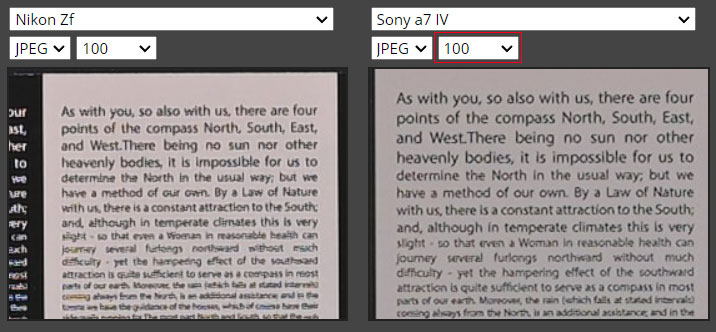
The clear advantage of a Sony A7 IV camera is that you can extract a bit more detail from a given scene, but at the very same time with the Nikon Z6 Mark 3 camera, we do have a higher resolution pixel shift mode.
PIXEL SHIFT Mode in Nikon Z6 Mark III Camera
- Sony A7 IV: 33 megapixels, providing a bit more details
- Nikon Z6 Mark 3: 24 megapixels, but features a pixel shift mode allowing for 96-megapixel images.
With the help of pixel shift mode with Nikon Z6 Mark 3 camera can capture 96 megapixels of image, but we do have a few drawbacks of pixel shift mode. The number one drawback is that the subject has to be still not moving at the very same time you have to place your camera on a tripod and overall the camera is not able to stitch the multiple-shot images you have to take out all the images, put them in a software and it will automatically stitch all together.
Sony A7R Mark IIIa as an option for Pixel Peepers
So yes if you are a high resolution sensor fan then in this particular price you can also get cameras like Fuji XT5 or maybe Sony A7R Mark 3 camera in the very same price range and both of them are approximately 40 megapixels and plus one of my personal favourite cameras is without a doubt Sony A7R Mark 3A even in 2024 so if you are a fan and you want to extract the maximum possible details available in the entire scene then you can go towards these two cameras.
Being said that the sensor does have a little bit less resolution but the low light performance and the readout speed of the Nikon Z6 Mark 3 camera is exceptionally well.
| Feature |
Nikon Z6 Mark 3 |
Sony A7 IV |
| IBIS Stops |
8 stops |
5.5 stops |
| Sensor-Shift IBIS |
Advanced sensor-shift mechanism linked with autofocus points |
Traditional sensor-shift stabilization |
| Slowest Shutter Speed Based on IBIS |
Up to 8 stops slower than standard handheld speeds (approximately 1-second exposure handheld) |
Up to 5.5 stops slower than standard handheld speeds (approximately 0.5-second exposure handheld) |
| Low Light Advantage |
Significant advantage due to 8 stops of IBIS |
Good stabilization but less effective in low light compared to Nikon Z6 Mark 3 |
Additional Features
Image Stabilization
- Nikon Z6 Mark 3: Advanced in-body image stabilization (IBIS) system, offering 8 stops of IBIS. The IBIS is connected to the autofocus points, Advanced AI IBIS algo inside the camera.
- Sony A7 IV: Traditional IBIS system with 5.5 stops of stabilization, not linked to autofocus points.
Now Nikon Z6 Mark 3 camera has an additional advantage for shooting in low light. You already have a low light sensitive full-frame CMOS sensor in construction Mark 3 camera which now pairs up with highly advanced in-body image stabilization system.
The Nikon Z6 Mark 3 camera image stabilization system is coming straight out from Nikon ZF camera. The camera is having 8 stops of IBIS sensor-shift mechanism and one of the most advanced things is the sensor-shift image stabilization system is directly connected with the autofocus point of the camera so as the autofocus point of your camera moves in the frame the sensor-shift image stabilization also shifts and gives you 8 stops of IBIS experience. If you compare with the Sony A7 IV camera sensor-shift stabilization system then it limits to 5.5 stops and it’s kind of traditional IBIS so it is not linked with the points and all that stuff.
Conclusion – Best Camera for Photographers
While the Sony A7 IV offers better battery life and higher resolution, the Nikon Z6 Mark 3 excels in low-light performance, viewfinder quality, display resolution, and continuous shooting speed. The Z6 Mark 3’s advanced HYBRID stabilization system and full-size HDMI port also make it a strong contender for professional use.
Make your Decision on these two FACTORS
1. The Requirement you have for your next camera
2. The Budget Range You Have
TNC Recommendation and Overall Best Camera for Photographers
Nikon Z6 Mark III camera features class-leading core specification and very reasonable price point, I recommend the Nikon Z6 Mark III over the Sony A7 IV camera, the A7 IV now needs an update and lets hope and expect the Sony A7 V will beat the Nikon Z6 III in terms of its core specification as well as price.
If, your requirement is less, you mostly shoot weddings, events, nature, Landscape, or Even portraits and you feel having a bit more details in your image will help you to capture shot with more details, then for sure the Sony A7 IV camera is more recommended to you.
SUPPORT US | Buy Nikon Z6 III from B&H Store | amazon.com
|
KEEP THIS BLOG ALIVE - Support New Camera Buy Canon Lenses, Buy Music CD or Digital Camera at amazon it helps this site, and you do not pay anything extra, it is just a way to help support this site.

|
















